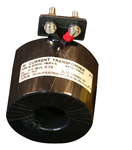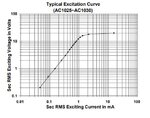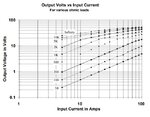nayakajit87
Member level 5


Dear all,
I am building application for motor protection Relay. I am using Arduino board for interface. I am new to concept of understanding CT calculation. I didnt calculation involved in burden resistor and burden VA .
**broken link removed**
I have attached image of CT which planning to use for application & similarly application circuit used for this application.
How Burden VA is calculated??
how to calculate Burden resistor if i wanted to interface with PIC16F886
How CT size can be reduce? what parameter i need to change to make as per size 2 meet accuracy
if i select this CT , what will be Max current i can supply above which it goes to saturation
what is effect on burden VA , if current exceeds 100A current.
Last edited:




